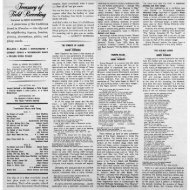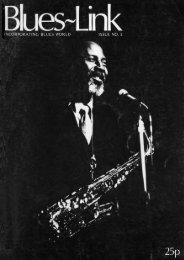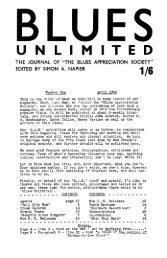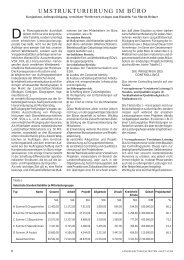memphis jug baimi - Planungsbüro Dipl.-Ing. Stefan Wirz
memphis jug baimi - Planungsbüro Dipl.-Ing. Stefan Wirz
memphis jug baimi - Planungsbüro Dipl.-Ing. Stefan Wirz
You also want an ePaper? Increase the reach of your titles
YUMPU automatically turns print PDFs into web optimized ePapers that Google loves.
characters elsewhere in black folklore, or they may be ‘makeups’ . No explanation is<br />
offered in the song, and the listener is left asking, with one o f the band, “ What kind of<br />
man was HE?”<br />
The band was absent from the recording studios for nine months after this session,<br />
and when they returned there were changes, both in music and personnel. Weldon had<br />
been replaced by the extrovert Alabama guitarist Charlie Burse, and Polk by the much<br />
stronger <strong>jug</strong> o f Jab Jones, who also sang and doubled on piano occasionally.<br />
As to the musical changes, it is difficult to know what weight to attach to them. The<br />
Memphis Jug Band, in common with others, played to demand, and it is difficult to<br />
believe that any one style took a preponderant place at any one time; nevertheless in the<br />
recordings which have been heard in the course of writing, a definite pattern emerges.<br />
This is set out in Appendix B., where songs which the author regards as Blues are marked<br />
with an asterisk (*); it will be evident that there are four periods, two in which mainly<br />
Blues were recorded, and two of an opposite character. There is, of course, room for<br />
argument as to what is Blues and what is not, but the general pattern still holds good.<br />
One may conclude that there was a definite change in the material played about<br />
1930, as we shall see when the songs after that period are discussed; and it could be<br />
argued that Burse and Jones, whose temporary replacement by Hambone Lewis comes<br />
shortly after a return to (predominantly) Blues stylings.<br />
Nevertheless, one does not want to make too much of this — patterns are an exceedingly<br />
dull subject, both in the construction and in the reading, and a tentative<br />
conclusion is that in a generally non-directive recording environment, the Memphis Jug<br />
Band was allowed to play whatever music it chose at the time of recording. This is not to<br />
deny that the pattern is significant, merely to affirm that the author believes that this<br />
music should be enjoyed, rather than embalmed in diagrams. The pattern is there —<br />
perhaps other conclusions may be drawn elsewhere.<br />
Jones played <strong>jug</strong> and sang on the first song recorded at a 1928 session: “ Lindbergh<br />
Hop” . This is ostensibly a celebration of Colonel Lindbergh’ s heroic solo flight across<br />
the Atlantic, which took place in May of the previous year, but in Jcnes’ hands it<br />
becomes a delightful nonsense song. The ‘ Lindyhop’ was, of course, an attempt to cash<br />
in on the aviator’ s fame through the medium of a dance craze. One may doubt the<br />
commercial potential remaining sixteen months after the event. Jones’ treatment is such<br />
that one is reminded irresistably of Fats Waller’ s technique of taking popular hits and<br />
reducing them to wreckage, though without being able to compare ‘ straight’ versions of<br />
the ‘ Lindyhop’ ,this must remain an open conclusion.<br />
“ Sugar Pudding” , a delightful dance tune also known as “ Take Your Fingers Off<br />
it” , demonstrates admirably why Polk was replaced; Jab Jones was a far stronger <strong>jug</strong><br />
player, and his blowing contributes largely to the success of the performance. He was<br />
omitted from “ A Black Woman Is Like A Black Snake” , which featured an excellent<br />
vocal duet (probably between Ramey and Burse), with Shade underpinning on harmonica<br />
(B&GR lists him as ‘ unk.’).<br />
8












